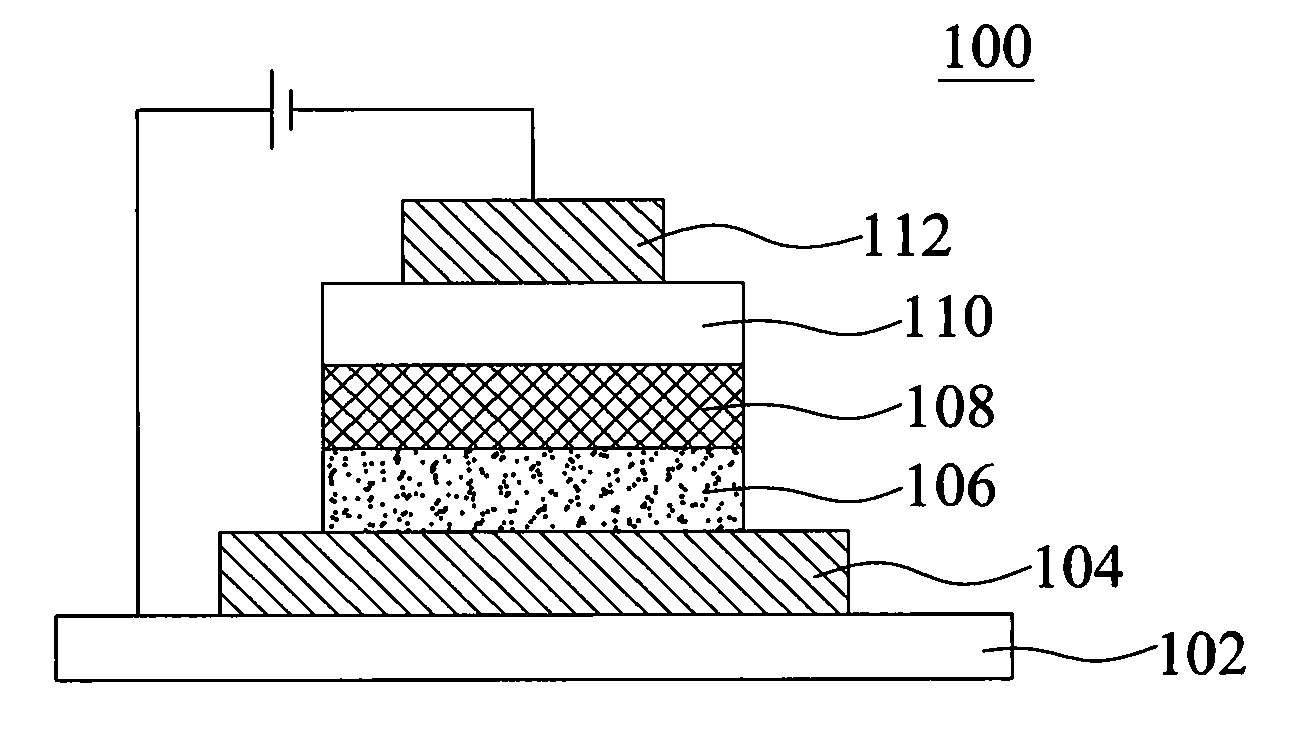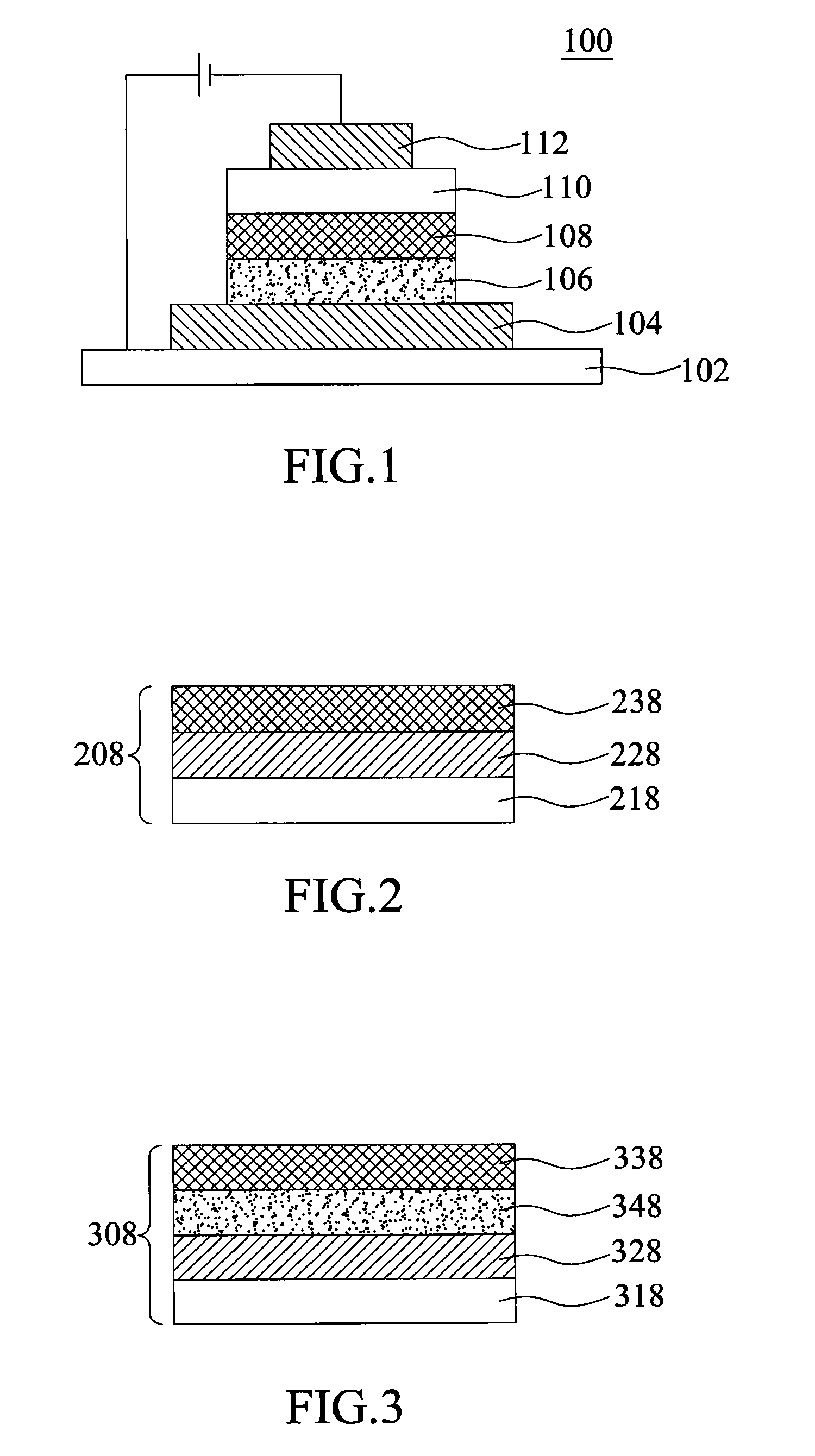White organic light-emitting device
- Summary
- Abstract
- Description
- Claims
- Application Information
AI Technical Summary
Benefits of technology
Problems solved by technology
Method used
Image
Examples
example 1
[0043]In Example 1, B1, B2, Y1 and Y2 comprised the following components:
[0044]B1: a host material (4CzPBP), a first transition metal organic complex (FIrpic) and a carrier transport material (TCTA) at a weight ratio of 75:15:10.
[0045]Y1: a host material (4CzPBP), a second transition metal complex (PO-01) and a carrier transport material (TCTA) at a weight ratio of 85:5:10.
[0046]Y2: a host material (PPT), a second transition metal complex (PO-01) and a carrier transport material (TCTA) at a weight ratio of 85:5:10.
[0047]B2: a host material (PPT), a first transition metal organic complex (FIrpic) and a carrier transport material (TCTA) at a weight ratio of 75:15:10.
[0048]The white organic light-emitting device of the present invention was fabricated according to the following procedure.
[0049]In the example, 150 nm-thick ITO was formed on a 0.7 mm-thick glass substrate as an anode. NPB having a thickness of 10 nm was coated on the anode to form a hole transport layer by thermal evapor...
example 2
[0052]In Example 2, B1, B2, Y1 and Y2 comprised the following components:
[0053]B1: a host material (4CzPBP), a first transition metal organic complex (FIrpic) and a carrier transport material (TCTA) at a weight ratio of 75:15:10.
[0054]Y1: a host material (4CzPBP) and a second transition metal complex (PO-01) at a weight ratio of 95:5.
[0055]Y2: a host material (PPT) and a second transition metal complex (PO-01) at a weight ratio of 95:5.
[0056]B2: a host material (PPT), a first transition metal organic complex (FIrpic) and a carrier transport material (TCTA) at a weight ratio of 75:15:10.
[0057]Moreover, the white organic light-emitting device in Example 2 was fabricated according to the procedure in Example 1.
[0058]In the example, a light-emitting multilayer B1-Y1-Y2-B2 was composed of four layers that emitted lights in the order of blue-yellow-yellow-blue lights, and Y1 and Y2 layers did not contain carrier transport materials. Test results of the current efficiency and operating vol...
example 3
[0059]In Example 3, B1, B2, and Y1 comprised the following components:
[0060]B1: a host material (4CzPBP), a first transition metal organic complex (FIrpic) and a carrier transport material (TCTA) at a weight ratio of 75:15:10.
[0061]Y1: a second transition metal complex.
[0062]B2: a host material (PPT), a first transition metal organic complex (FIrpic) and a carrier transport material (TCTA) at a weight ratio of 75:15:10.
[0063]Moreover, the white organic light-emitting device in example 3 was fabricated according to the procedure in example 1, wherein the thickness of Y1 layer was 0.1 nm. In the example, a light-emitting multilayer B1-Y1-B2 was composed of three layers that emitted lights in the order of blue-yellow-blue lights. Test results of the current efficiency and operating voltages of the device at luminance of 1000 cd / m2 and the color coordinates of white light of the device are shown in Table 2.
PUM
 Login to View More
Login to View More Abstract
Description
Claims
Application Information
 Login to View More
Login to View More - R&D
- Intellectual Property
- Life Sciences
- Materials
- Tech Scout
- Unparalleled Data Quality
- Higher Quality Content
- 60% Fewer Hallucinations
Browse by: Latest US Patents, China's latest patents, Technical Efficacy Thesaurus, Application Domain, Technology Topic, Popular Technical Reports.
© 2025 PatSnap. All rights reserved.Legal|Privacy policy|Modern Slavery Act Transparency Statement|Sitemap|About US| Contact US: help@patsnap.com



